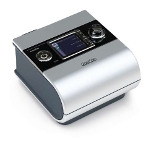The Latinist wrote:I'm curious, however, about [t]he decrease in obstructives with only a change in maximum pressure. Does this suggest that the machine may have been misidentifying centrals as obstructives and chasing them with pressure increases?
Events of any kind raise the level of the stress hormones. Stress hormones up – inflammation up – the tendency to obstruct up. So if you reduce the arousals (even non-seen micro-arousals) you reduce the tendency to inflame and obstruct.
As well if you have increased breathing to where the “apneic threshold” is breached by the blood carbon dioxide levels going too low you are also in the realm where the blood carbon dioxide levels are so low that blood circulation and metabolism are frustrated. I take note that I find that the very first indication that I am breathing too much is that my nose stuffs up. Since I have learned to breath in a manner which holds my blood carbon dioxide levels more optimum I have enjoyed “smelling the flowers” all spring and summer and have no desire or motivation to seek out “allergy meds”.
Breathing at good levels my feet are warm, the veins on the back of my hand not swollen, my nose is moist, warm, and clear. Breath too much the feet grow cold, the viens on the back of my hand become plumped, and my nose grows stuffy (but also note that breathing too little will plump the veins). So if you are breathing enough air to cause “clear airway apneas” I can think that your nose and airway would become more stuffy and likely tend you toward more obstructive apnea. At least that is consistent with my experience.
The Latinist wrote: If this trend keeps up, might it be advisable to try a further decrease to the maximum? Or maybe even try straight CPAP at 14 cm H20 (an alternative my doctor mentioned at our last appointment)?
I use straight CPAP with EERS if needed.
I think that straight CPAP is also easier to “titrate at home”. When I had problems with centrals apparently from weight loss (and possibly summer heat – looking back) I simply reduced pressure every seven to ten days one cm/H2O at a time. Some sixty days later the data indicated that “clear airway apnea” went away at 12 cm/H2O and obstructives became part of the scene at 7 cm/H2O.
But the tendency to over breath and so develop hypocapnic central apnea is tied to stress, what we eat, and many other things. It is by no means constant even as and perhaps more than our critical closing pressure (pressure needed to eliminate obstructive events) is also not a constant and why they invented the auto-PAP machines.
Strait CPAP seems to always test out as causing the least arousals. I think it is the best choice. I think it needs to be supported with good lifestyle choices (eat well, move well, manage stress, regard circadian rhythm) and with some of us the use of EERS as needed.












